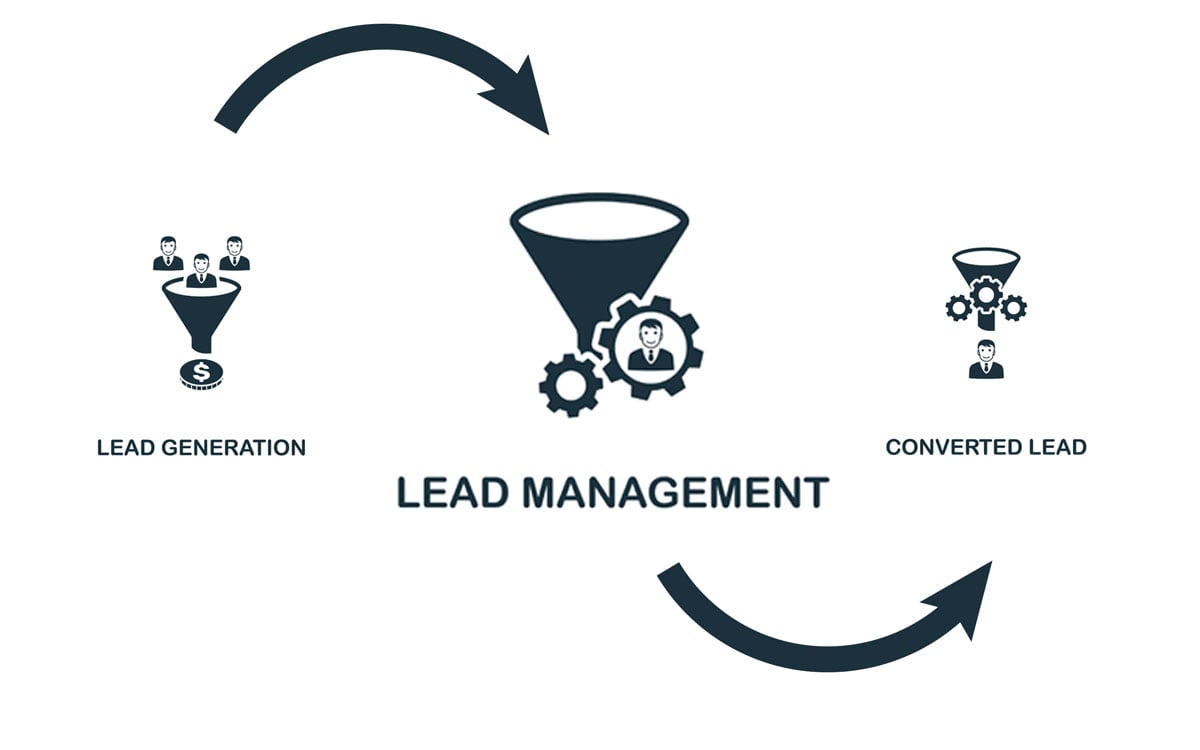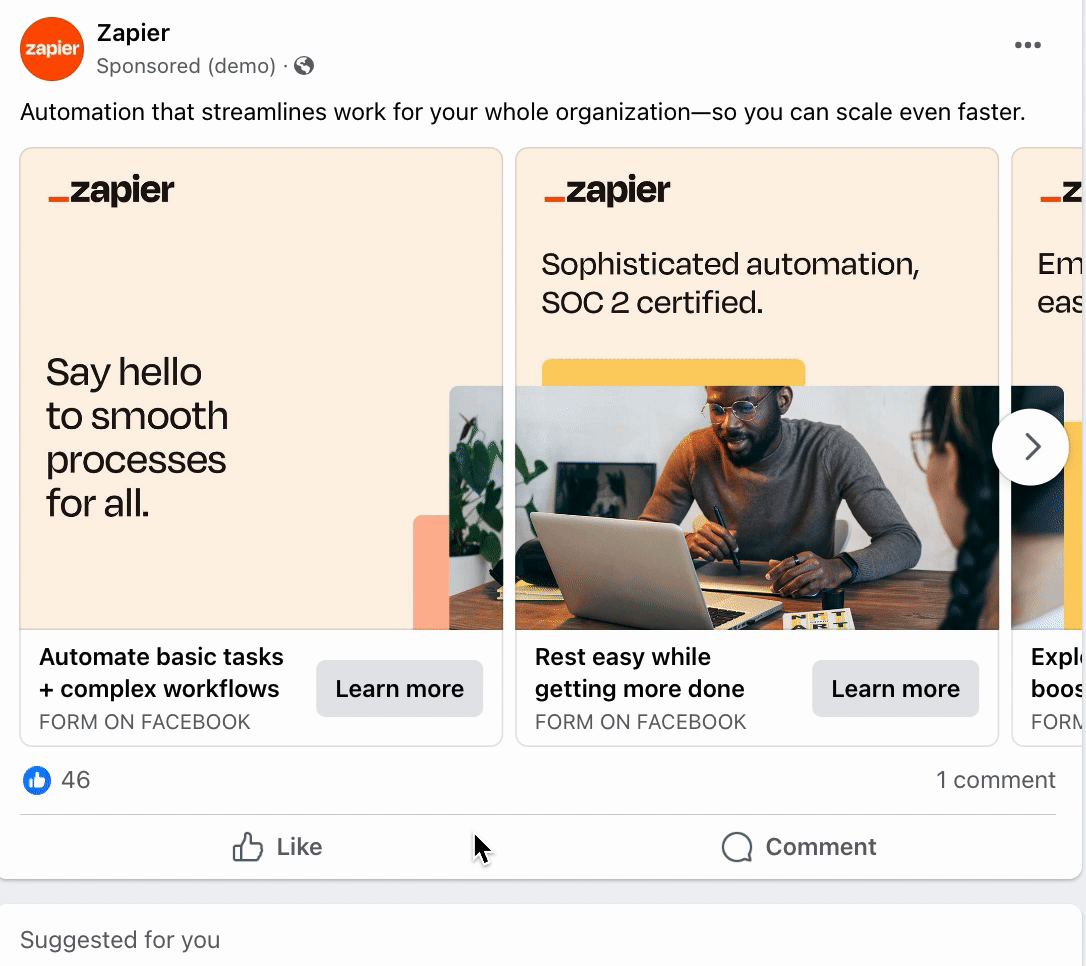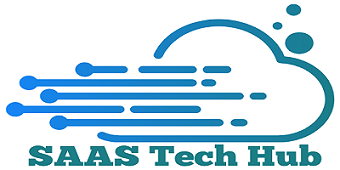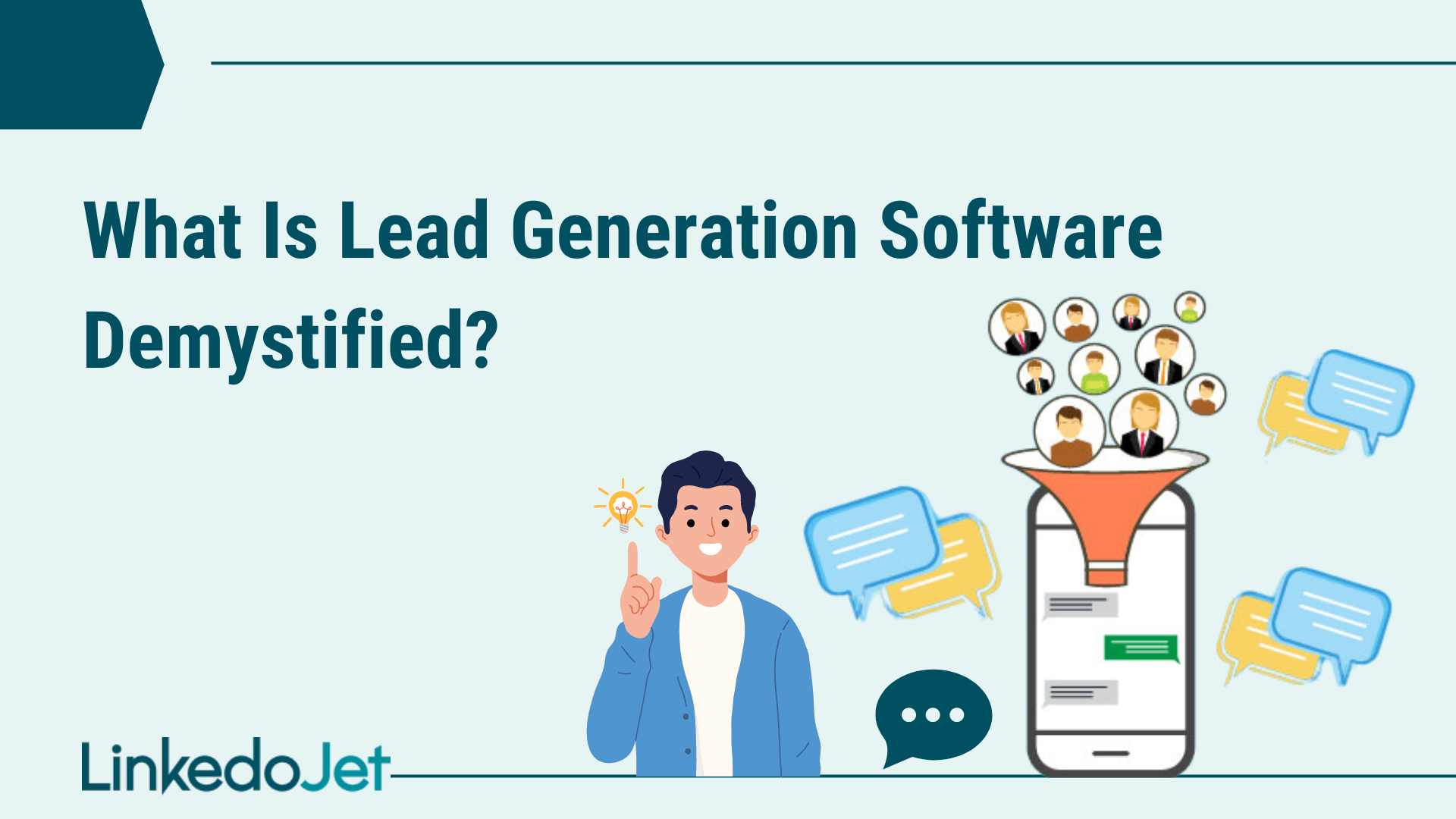Lead generation software helps businesses find potential customers. It automates the process of identifying and collecting leads.
In today’s digital world, finding new customers is crucial. Lead generation software can save time and effort. It collects information from various online sources. This software analyzes data to find interested prospects. Businesses can then reach out to these potential customers.
Understanding how lead generation software works can boost your marketing efforts. It helps in targeting the right audience. This blog will explain the workings of lead generation software. By the end, you will know how it can benefit your business. Keep reading to learn more about this valuable tool.

Credit: clickback.com
Introduction To Lead Generation Software
Every business needs customers. But finding new customers can be hard. This is where lead generation software comes in. This software helps businesses find potential customers. It makes the process easier and faster.
What Is Lead Generation Software
Lead generation software is a tool that helps businesses find new customers. It collects information about people who might be interested in a product or service. This information is called “leads”. The software uses different methods to find these leads.
- Website forms
- Social media
- Email campaigns
- Online ads
The software organizes these leads. It helps businesses follow up with them. This can lead to new customers and more sales.
Importance For Businesses
Lead generation software is very important for businesses. Here are some reasons why:
| Benefit | Description |
|---|---|
| Time-Saving | The software automates the process of finding leads. Businesses can focus on other tasks. |
| Better Targeting | The software helps find the right leads. This means better chances of making a sale. |
| Cost-Effective | Automating lead generation saves money. It reduces the need for large sales teams. |
| Data Management | The software organizes leads in one place. This makes it easy to manage and follow up. |
Using lead generation software can help businesses grow. It makes finding new customers easier and more efficient.
Key Features
Lead generation software helps businesses find potential customers. It automates various tasks, making the process efficient. Below, we explore the key features of lead generation software.
Data Collection
Lead generation software gathers data from multiple sources. It collects information from websites, social media, and online forms. This data includes names, emails, and phone numbers. The software stores this data securely for future use.
Automated Outreach
The software automates the outreach process. It sends emails and messages to potential leads. This saves time and ensures consistent communication. Automated outreach helps maintain engagement with leads.
Lead Scoring
Lead generation software scores leads based on their behavior. It tracks interactions like email opens and website visits. High scores indicate strong interest. This helps prioritize leads for sales teams. Lead scoring improves the efficiency of the sales process.
Types Of Lead Generation Software
Understanding the different types of lead generation software can help businesses choose the best tools for their needs. Each type serves a unique purpose and offers specific features to streamline the lead generation process.
Inbound Vs Outbound
Lead generation software can be classified into inbound and outbound tools. Inbound lead generation software focuses on attracting customers by providing valuable content and engaging them through organic methods. This includes tools for SEO, content marketing, and social media.
Outbound lead generation software, on the other hand, involves reaching out to potential customers directly. These tools include email marketing, cold calling, and targeted advertising. Both types of software aim to generate leads but use different approaches to do so.
Crm Integration
Effective lead generation software often integrates seamlessly with Customer Relationship Management (CRM) systems. CRM integration ensures that all lead data is stored in one place. It allows for better lead tracking, nurturing, and conversion.
Here are some benefits of CRM integration:
- Centralized lead data management
- Improved lead nurturing processes
- Enhanced collaboration between sales and marketing teams
By integrating with a CRM, businesses can better understand their leads and tailor their strategies accordingly.
Setting Up Lead Generation Software
Setting up lead generation software can seem daunting, but it doesn’t have to be. With the right guidance, you can have your lead generation tool up and running smoothly. This section will guide you through the essential steps to get started.
Choosing The Right Tool
Choosing the right lead generation software is crucial. Begin by identifying your business needs. Are you looking to capture leads through forms, landing pages, or email campaigns? Make a list of features you need. Compare different tools based on these features.
Here’s a simple table to help you compare:
| Feature | Tool A | Tool B | Tool C |
|---|---|---|---|
| Form Builder | Yes | No | Yes |
| Landing Pages | Yes | Yes | No |
| Email Campaigns | No | Yes | Yes |
Installation And Configuration
Once you have chosen the right tool, it’s time to install and configure it. Follow these steps:
- Download the software from the official website.
- Install the software following the provided instructions.
- Open the software and navigate to the settings page.
Configuration may vary depending on the tool. Generally, you will need to:
- Set up your account details.
- Integrate with your CRM system if needed.
- Configure lead capture forms or landing pages.
- Set up email templates for follow-ups.
Testing is crucial. Ensure that all forms and pages function correctly. Send test emails to check deliverability. This will help you identify any issues before going live.
Data Collection Methods
Lead generation software helps businesses capture potential customers’ information. It uses various data collection methods to gather leads. Understanding these methods can improve your lead generation strategy.
Forms And Landing Pages
Forms and landing pages are crucial for collecting leads. A landing page is a standalone web page. It is designed for a single focused objective. This page often includes a form for visitors to fill out. The form asks for basic details like name, email, and phone number. This information is then stored in the lead generation software.
Using clear and concise forms can increase conversion rates. Keep the form fields to a minimum. This encourages more visitors to complete the form. Place the form above the fold to make it easily accessible.
| Form Field | Purpose |
|---|---|
| Name | Identifies the lead |
| Contact and follow-up | |
| Phone Number | Direct communication |
Social Media Integration
Social media integration is another effective data collection method. Businesses can collect leads directly from social media platforms. This is done by using lead generation ads. These ads include forms that users can fill out without leaving the platform.
Integrating social media with your lead generation software offers several benefits:
- Wider reach: Tap into a larger audience.
- Easy engagement: Users can engage with your content effortlessly.
- Data accuracy: Social media platforms often autofill form fields, reducing errors.
Ensure your social media profiles are optimized. Consistent branding and clear call-to-action buttons help attract more leads.

Credit: blog.clickpointsoftware.com
Lead Management
Lead management is a critical aspect of lead generation software. It encompasses the processes of tracking, nurturing, and converting leads into customers. Effective lead management ensures no potential customer falls through the cracks. Here’s how it works:
Tracking Leads
Tracking leads is the first step in lead management. The software captures lead information from various sources. These sources can include websites, social media, and email campaigns. Each lead is logged into the system with details like name, email, and source of the lead. This data helps in understanding where the leads are coming from and which channels are most effective.
The software often provides dashboards and reports. These tools help in monitoring the performance of lead generation efforts. You can see which campaigns are driving the most leads. You can also identify areas that need improvement.
Nurturing Leads
Once leads are tracked, the next step is nurturing them. This involves engaging with leads through personalized communication. The software automates email campaigns, sending targeted messages based on lead behavior. For example, if a lead downloads a whitepaper, they might receive a follow-up email with more resources.
Lead nurturing also includes scheduling follow-up calls and setting reminders. The goal is to build a relationship with the lead. This helps in moving them down the sales funnel. The software often integrates with CRM systems, ensuring sales teams have all the information they need to close deals.
Here’s a quick summary in a table format:
| Process | Description |
|---|---|
| Tracking Leads | Capturing and logging lead information from various sources. |
| Nurturing Leads | Engaging leads with personalized communication and follow-ups. |
In essence, lead management is about ensuring no lead is ignored. Effective tracking and nurturing can significantly improve conversion rates.
Analyzing Performance
Lead generation software helps businesses find potential customers. But how do you know if it’s working well? Analyzing performance is key. This process helps you understand which methods bring the best results. Monitoring specific metrics and improving conversion rates can help you get the most from your lead generation efforts.
Metrics To Monitor
Monitoring the right metrics helps you track the success of your lead generation. Here are some key metrics:
- Click-Through Rate (CTR): This shows how many people click on your ads.
- Conversion Rate: This measures the percentage of visitors who become leads.
- Cost Per Lead (CPL): This tells you how much you spend to get one lead.
- Return on Investment (ROI): This shows how much profit you make from your lead generation.
Improving Conversion Rates
Improving conversion rates is essential for better results. Here are some tips:
- Optimize Landing Pages: Make sure your landing pages are clear and engaging.
- Use Strong Call-to-Actions (CTAs): Encourage visitors to take action with clear CTAs.
- Personalize Content: Tailor your content to meet the needs of your audience.
- Test and Adjust: Regularly test different strategies and adjust based on results.

Credit: zapier.com
Best Practices
Lead generation software can help your business find potential customers. Using this software effectively requires certain best practices. Following these practices can improve results and ensure compliance with legal standards.
Gdpr Compliance
Ensure your lead generation software respects GDPR regulations. This means collecting data with user consent. Your forms should be clear about how data will be used. Provide users the option to opt-out easily. Regularly review your data handling processes. Make sure they align with GDPR guidelines.
Avoiding Common Pitfalls
Avoid using outdated or incorrect data. This can harm your outreach efforts. Always verify your leads before contacting them. Also, avoid sending too many messages. It can annoy potential customers. Instead, focus on personalized, relevant communications. Lastly, ensure your software integrates well with your CRM system. This keeps your data organized and accessible.
Case Studies
Case studies provide real-world examples of how lead generation software works. They help us understand the software’s practical applications. These stories from different industries highlight both successes and challenges. Let’s explore a few case studies to see how businesses benefit from lead generation software.
Successful Implementations
Company A, an e-commerce retailer, used lead generation software to increase sales. They captured leads through pop-up forms on their website. This approach led to a 30% increase in their customer base. The software automated follow-up emails, saving time and effort.
Company B, a B2B service provider, struggled to find quality leads. They integrated lead generation software with their CRM system. This integration provided insights into potential clients’ behavior. As a result, their sales team focused on high-potential leads. This led to a 20% boost in conversions.
Company C, a startup in the tech industry, used lead generation software for targeted marketing. They segmented their audience based on user data. This allowed them to send personalized offers. The result was a 15% rise in their email open rates.
Lessons Learned
From these case studies, we learn the importance of automation. Automating lead capture and follow-up saves time and resources. Companies can focus on nurturing and converting leads.
Integration with existing systems is crucial. Connecting lead generation software with CRM systems provides valuable insights. This helps in prioritizing leads effectively.
Segmentation and personalization are key. Understanding your audience leads to better targeting. Personalized communication increases engagement and conversion rates.
Finally, continuous monitoring and optimization are vital. Regularly reviewing and adjusting strategies ensures maximum efficiency. Companies should adapt their approach based on performance data.
Future Trends
Lead generation software is evolving rapidly. New technologies are shaping its future. Businesses are always seeking better ways to attract and convert leads. Let’s explore some future trends in lead generation software.
Ai And Machine Learning
AI and machine learning are transforming lead generation. They help in analyzing large data sets quickly. This leads to more accurate targeting. AI can predict customer behavior. It can identify potential leads more effectively. Machine learning algorithms improve over time. This means better results as the software learns.
Personalization
Personalization is key to engaging leads. Future lead generation software will focus on this. Personalized messages convert better. They make prospects feel valued. The software will use data to create tailored experiences. This includes personalized emails and content. The result? Higher conversion rates and satisfied customers.
Frequently Asked Questions
What Is Lead Generation Software?
Lead generation software automates the process of identifying potential customers. It captures, nurtures, and converts leads into sales opportunities. This software integrates with other marketing tools.
How Does Lead Generation Software Capture Leads?
Lead generation software captures leads through forms, landing pages, and social media. It uses tracking pixels and cookies to gather data. This helps in collecting contact information.
Can Lead Generation Software Integrate With Crm?
Yes, lead generation software integrates with CRM systems. This ensures seamless data transfer and efficient lead management. It helps in tracking and nurturing leads.
What Are The Benefits Of Lead Generation Software?
Lead generation software saves time and increases efficiency. It improves lead quality and boosts sales conversions. It also provides valuable insights and analytics.
Conclusion
Lead generation software simplifies finding potential customers. It automates tedious tasks. This saves time and effort. Businesses can focus on nurturing leads. The software collects valuable data. This helps in understanding customer needs. Better insights lead to better strategies. The right tool can boost your efficiency.
It ensures a steady flow of leads. This keeps your business growing. Investing in lead generation software is smart. Make sure to choose the best fit for your needs. This can transform your approach to lead generation.


